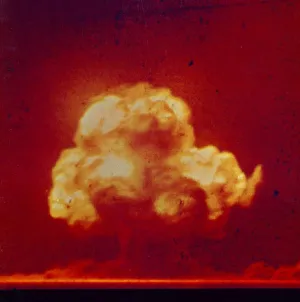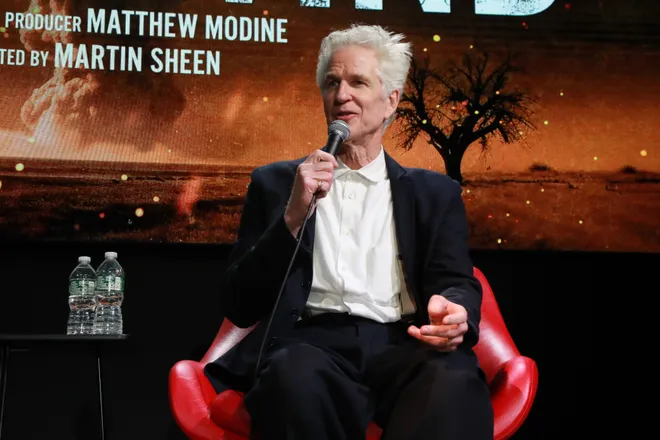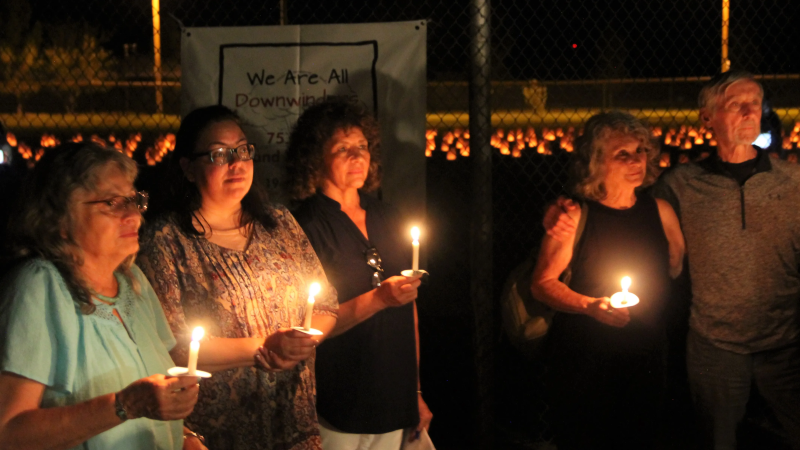Time is running out for American victims of nuclear tests. Congress must do what's right.
“They know they work. Why do they keep testing them.” This wasn’t a question. It was a statement my brother Maury Modine made as he was arrested during an anti-nuclear test demonstration in the mid-1980s.
Maury and more than 400 other protesters, including the actor Martin Sheen, entered the perimeter of the Nevada Test Site, just 65 miles northwest of Las Vegas, where the U.S. government detonated nearly 1,000 full-scale nuclear tests.
Now the only government program designed to help thousands of impacted downwind communities, the Radiation Exposure Compensation Act, expires on June 7 unless the House of Representatives takes nearly immediate action.
With only a few working days left for Congress to act, the sense of urgency for Speaker Mike Johnson to bring it to the floor for a vote is palpable.
Court ruled US government was negligent on nuke tests

The Nevada Test Site is roughly the size of Rhode Island and sits squarely on sacred Shoshone land. Ample evidence proves that radioactive fallout has devastated Native American communities as well as communities across the country and permeated land, water, wildlife and the entire food chain.
The frightening truth is that when a nuclear bomb is detonated, radioactive fallout subjects people living downwind of ground zero to toxins carried by the wind and jet streams and carried down to earth in the rain and snow. Even though you may live far enough away to not hear, feel or see the explosion, you can’t escape its repercussions.
Similarly, the mining and processing of uranium to power nuclear warheads spread toxic materials across communities in the Southwest and Midwest.
Oscar nods honor 'Oppenheimer,'but what about Americans still suffering from nuke tests?
In our research for the new documentary film "Downwind," we learned that the U.S. government disgracefully referred to unwitting communities in the path of fallout as a “low-use segment of the population.”
New Mexicans living near the Trinity test site were told that the detonation of the first atomic bomb was a weapons depot accident and that there was nothing to worry about.
The U.S. government went on to assure those near the Nevada Test Site that the blasts posed no danger, despite scheduling tests when weather patterns were predicted to direct fallout away from population centers in Las Vegas and California.
Similarly, in American cities impacted by Cold War radioactive waste storage, including St. Louis, officials repeatedly downplayed the health risks to residents. Children who routinely played in the toxic waters of Coldwater Creek in Missouri are now facing cancer diagnoses and other mysterious illnesses that continue to plague the community to this day.
A federal district court has ruled that the U.S government was negligent in monitoring fallout and warning communities of the risks.
We have been bombed – by our own government

Why does any of this concern me?
Perhaps because it hits close to home. I grew up in Utah. My grandparents’ homestead was in Death Valley, not far from the Nevada Test Site. My father grew up there and later died of cancer, like so many of our friends and neighbors.
I was in kindergarten when my classmates and I routinely practiced “bomb drills,” never knowing that we had already been bombed – and by our own government.
More than 2,000 nuclear tests have been conducted worldwide. The United States detonated over half of them with devastating consequences for Americans living downwind.
Oppenheimer's nuclear fallout:How his atomic legacy destroyed the world of downwind communities
In 1990, the U.S. government passed the Radiation Exposure Compensation Act (RECA) acknowledging that these tests had damaging health impacts on residents in nearby counties and beyond. The act, while a good start, was always too limited in geographic scope. It provided only partial compensation for residents in only 10 counties of Utah and a handful of others in Arizona and Nevada. This represented a fraction of the areas impacted.
As we found in our research for "Downwind," every corner of this country and even parts of Canada were touched by the initial Trinity test in 1945, depicted in the Oscar-winning best picture "Oppenheimer" – a film I appeared in – and by the subsequent tests in Nevada.

These “tests” have caused more cancers and chronic radiation-related illnesses than doctors are able to count. Hundreds of thousands of acres of land continue to remain radioactive and unsafe for humans and the many creatures we share this earth with.
Affected downwind communities have been pushing for decades to improve RECA to include ordinary citizens and uranium workers throughout the American West and elsewhere that were originally excluded.
The Radiation Exposure Compensation Reauthorization Act, passed by the Senate with overwhelming bipartisan support in March, would finally right a historic wrong by offering compensation to the people sickened by testing in the West and Guam, as well as communities in the St. Louis area sickened by the storage of nuclear waste from the Manhattan Project and other victims of radiation exposure in specific areas of Tennessee, Kentucky and Alaska.
Now, the same bill must make its way through the House before the RECA program sunsets in little more than a week.
While the Cold War never went nuclear "hot," it created hot zones and those hot zones caused casualties. The victims of these toxic experiments were put at risk by our own government. They must not be forgotten and deserve to be recognized and compensated for their sacrifices.
For these communities, the Cold War has not ended. People are still getting sick and dying while our government delays doing what is right.
Matthew Modine is an actor, multimedia artist and environmentalist. He is the executive producer on the Oscar-eligible feature documentary film "Downwind" (2023) and portrayed Vannevar Bush in Christopher Nolan’s Academy Award-winning film "Oppenheimer." Stream "Downwind" on several platforms, including Peacock, Amazon Prime and Apple TV.
Disclaimer: The copyright of this article belongs to the original author. Reposting this article is solely for the purpose of information dissemination and does not constitute any investment advice. If there is any infringement, please contact us immediately. We will make corrections or deletions as necessary. Thank you.







